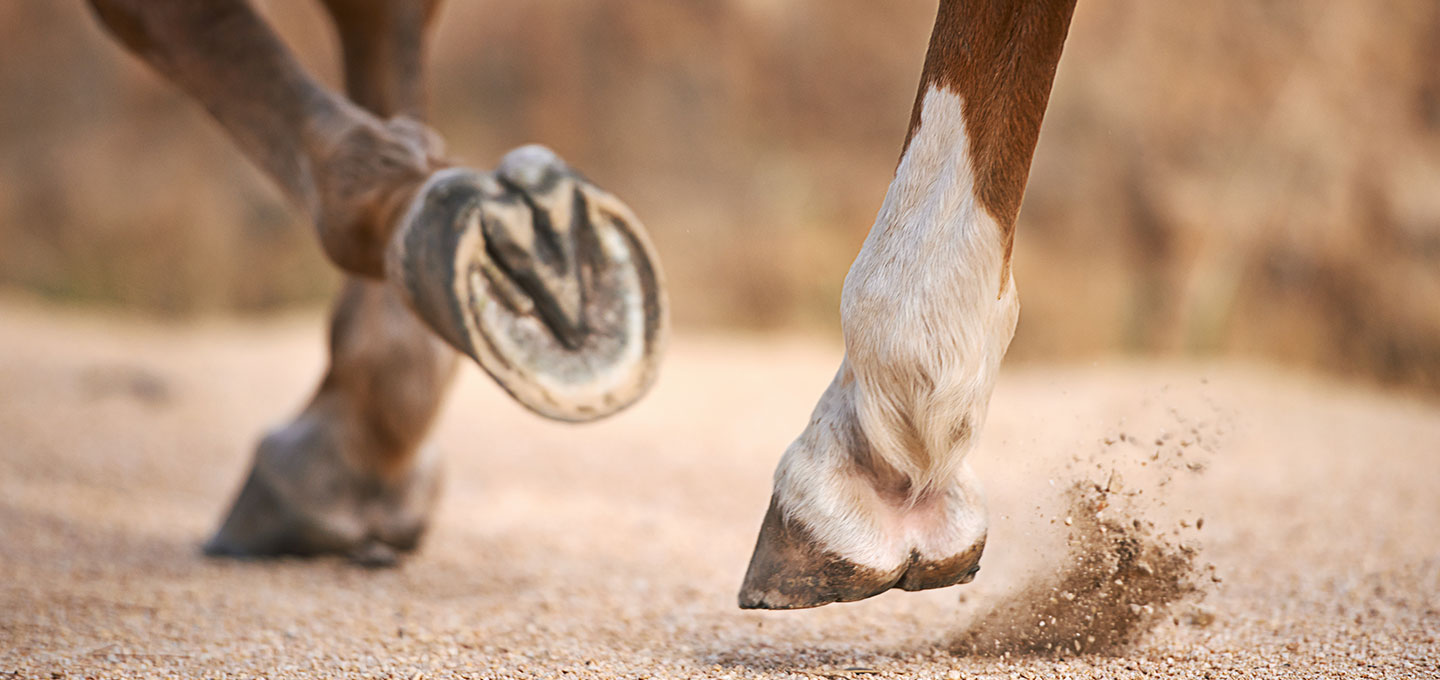Laminitis is a disease that particularly affects some breeds of horses who are also known to have an exaggerated tendency to becoming overweight (ponies, Arab horses, Iberian horses, American breeds...).
When a horse is suffering from laminitis he displays a characteristic lameness, familiar to riders: he transfers his weight onto his hind legs in order to lighten the forelegs as much as possible.
Although the disease is common, it shouldn’t be forgotten that laminitis remains the third cause of mortality in the horse, behind colic and fractures.
The hoof of the horse is attached to the skeleton thanks to an interdigitation between the structures called laminae. These laminae come from either from the inside of the foot (dermal) or from the outside of the foot (epidermal). It’s the interlocking between these dermal and epidermal laminae which maintains the foot’s integrity. The vascularization of the foot is complex and of great importance, it thus plays an vital role in it’s functioning. Laminitis is a disease that comes on rapidly and leads to serious lamenesses.
Laminitis can be acute or chronic. It ‘s principal origins are :
- Trauma, related to overexertion and/or weight too heavy to carry,
- Changes to the metabolism (insensitivity to insulin, equine metabolic syndrome, Cushing’s disease),
- Endotoxemia which develops after in ingestion of a large quantity of soluble sugars (such as starch or oligo-fructose) or following an infection (retained placenta for example).
Thus, the association between the health of the large intestine and the health of the hoof is important in the horse
During an attack of laminitis the horse shows a characteristic lameness : shortened strides, he anticipates the putting down of his foot and adopts a laminitic stance. Laminitis comes on following mechanisms that interfere with the role of laminae : currently, the two mechanisms put forwards are disturbances to the vascularization of the foot and the activation of inflammation. These disturbances to the physiology of the foot thus lead to a loss of structure in the laminae bringing about the symptoms observed during an attack of laminitis.
In the most severe cases the distal phalanx is no longer supported by the soft tissues and rotates in the foot.
IN ORDER TO PREVENT THE ONSET OF LAMINITIS
We recommend :
- To limit obesity by keeping a regular watch over your horse’s condition score (optimal =3/5),
- To restrict starch to 100g/100kg bodyweight per meal in horses who are not prone and to 30g/100kg bodyweight in horses who are prone, some energy can be supplied by fats and oils rich in Omega 3 (flaxseed oil) which have anti-inflammatory properties and improve insulin sensibility,
- To limit turnout to grass (a grazing muzzle is often useful in this case), especially through spring and autumn and soak hay in water for at least 2 hours before feeding it,
- Contribute to the functioning of the intestinal microbiota by supplementing with pre-pro-postbiotics
DURING AN ATTACK OF LAMINITIS
We recommend :
- Not feeding cereals. If the horse is however not obese, nor has insensitivity to insulin and his laminitis is not related to the absorption of sugars, he can be given cereals but the ration must not exceed 15g of starch/100kg bodyweight per meal,
- Chiefly feeding hay with a low sugar level, soaked for at least 2h before being fed, ideally offered in a small holed haynet to slow ingestion,
- Strengthen supplies of vitamins (vitamin B8 (biotin), vitamin A, vitamin B6, vitamin E) and minerals (copper, zinc and selenium) to support the recovery and functioning of the foot,
- Rebalance the intestinal microbiota by administering pre-pro-postbiotic supplements.
Morgane ROBLES, Docteur en Sciences de la Vie et de la Santé.
Cyrille DAVID, Docteur Vétérinaire.
REVERDY Nutrition Équine, Département Recherche & Développement, Juvigny-les-Vallées, France




